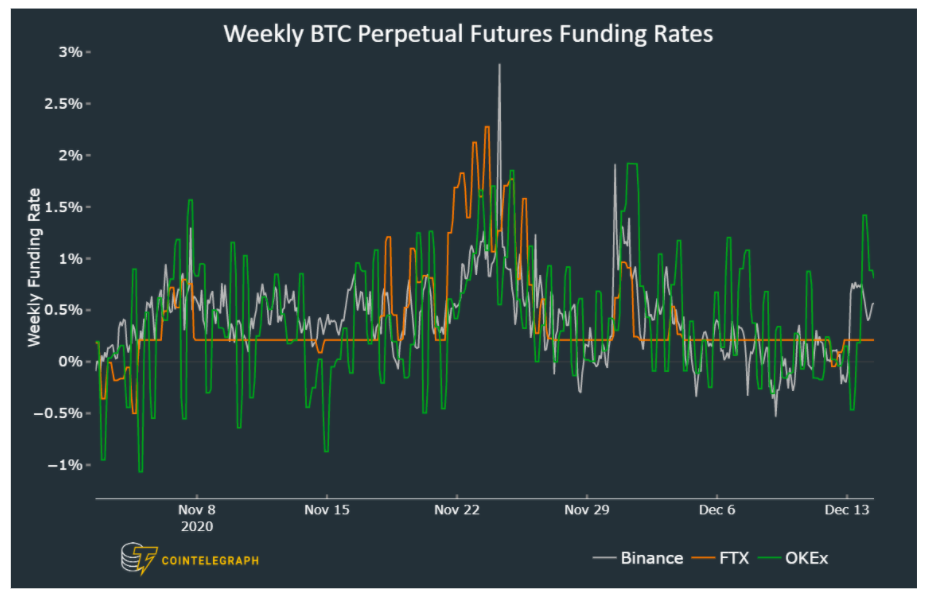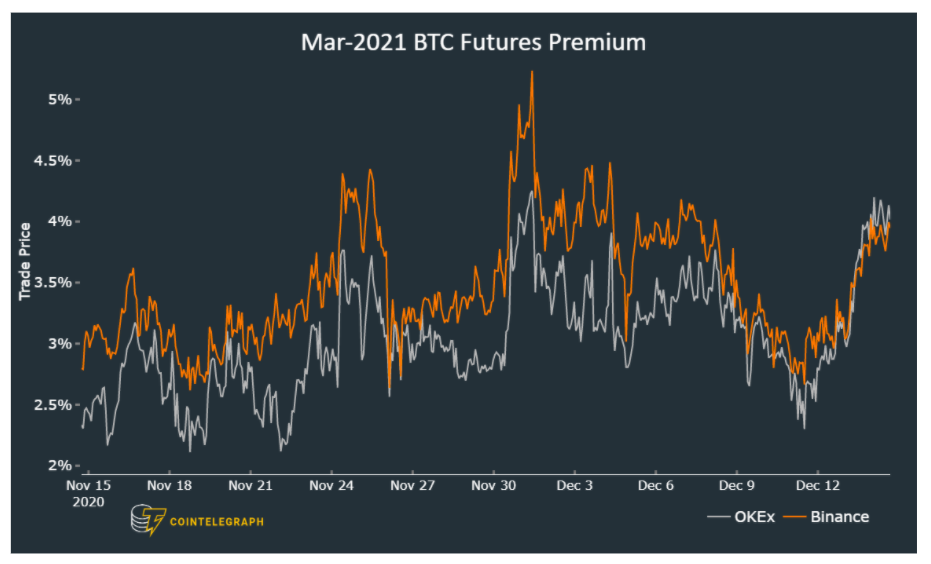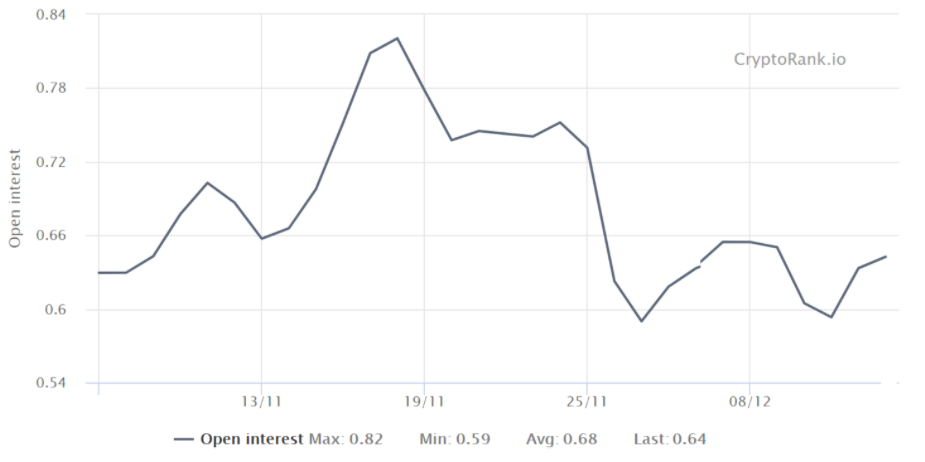
As Bitcoin (BTC) tested a $17,580 low on Dec. 11, investors remained relatively calm despite some analysts issuing bearish estimates. The week may have finished at the same level where it started, but the fundamentals for Bitcoin have become even healthier.

Whenever the Bitcoin price drops considerably, there is usually some blatantly bearish analysis popping up and while this may sway the investment decisions of retail investors, professional traders know better. They avoid the FUD and the excessive pessimism that is the result of negative price swings.
In the past week, Bitcoin dominance continued its uptrend up, from 63.5% to 64.5%. This move was likely fueled by MassMutual insurance company's $100 million acquisition and MicroStrategy's $650 million bond sale.
This news appears to have given further confidence to investors who were doubting a potential $20,000 retest.

Bitcoin outperformed the top-15 altcoins, which dropped 2.5% on average over the past week. However, overall volumes were disappointing compared to the previous month. This indicator partially invalidates the recent $17,580 low, as it denotes a lack of confidence.
On the other hand recent data also display a moderate lack of interest at the current $19,100 level, but that is something that ought to be tested during the week when usually more volume goes through.
Institutional investors accumulate while Bitcoin price consolidates
Crypto fund manager Grayscale Investments continued to aggressively add BTC to their portfolio, surpassing $10.7 billion worth.

Over the past week, 14,050 BTC were added, totaling 561,130 BTC. Therefore, it was another excellent week for Grayscale Bitcoin Trust. Similar excitement can be seen by analyzing the fund’s premium over the effective BTC held by each share, currently at 0.00095116 BTC.

As depicted above, the premium increased from 11% to 22% in the past 7 days. The indicator reached an 8% premium on Dec. 9 but quickly recovered to 16%. Therefore it reflects positive momentum as it stands above its 3-month average of 12%.
Perpetual futures funding held steady
Perpetual contracts, also known as inverse swaps, have an embedded rate usually charged every eight hours. Funding rates ensure there are no exchange risk imbalances. Even though both buyers and sellers' open interest is matched at all times, the leverage can vary.
When buyers (longs) are the ones demanding more leverage, the funding rate turns positive. Therefore, the buyers will be the ones paying up the fees. This issue holds especially true during bull runs, when there is usually more demand for longs.
Sustainable rates above 2% per week translate to extreme optimism. This level is acceptable during market rallies but problematic if the BTC price is sideways or in a downtrend.
In situations like these, high leverage from buyers increases the likelihood of large liquidations during surprise price drops.

Take notice how, despite Bitcoin's weakness on Dec. 11, the weekly funding rate managed to avoid the negative territory. This data indicates that both short (sell) and long (buy) traders use roughly the same leverage.
Such an indicator can be deemed neutral, as both sides have powder left to increase bets.
The futures premium has returned to normal
The funding rate might bring some distortions as it's the preferred instrument of retail traders and, as a result, is impacted by excessive leverage. On the other hand, professional traders tend to dominate longer-term futures contracts with set expiry dates.
A trader can gauge their bullishness level by measuring how much more expensive futures are versus the regular spot market. The 3-month fixed-calendar futures should usually trade with a 1.5% or higher premium versus regular spot exchanges.
Whenever this indicator fades or turns negative, this is an alarming red flag. Such a situation, also known as backwardation, indicates that the market is turning bearish.

The above chart shows that the indicator briefly touched the extreme-optimistic 5% on Dec. 1 but later adjusted to 2.5% as Bitcoin failed to break the $20,000 resistance.
The indicator’s recent surge to 4% shows confidence in the BTC price recovery, indicating optimism from professional traders.
Options put/call ratio
By measuring whether more activity is going through call (buy) options or put (sell) options, one can gauge the overall market sentiment. Generally speaking, call options are used for bullish strategies, whereas put options for bearish ones.
A 0.70 put-to-call ratio indicates that put options open interest lag the more bullish calls by 30% and is therefore bullish.
In contrast, a 1.20 indicator favors put options by 20%, which can be deemed bearish. One thing to note is that the metric aggregates the entire BTC options market, including all calendar months.

As Bitcoin price approaches $20,000, it's only natural for investors to seek downside protection. As a result, the put-to-call ratio peaked at 0.70 on Dec. 2. Albeit the increase, it was still favoring the more bullish call options by 30%.
After this protection-seeking period, the indicator has moved back to a healthy 0.64. Thus, such a metric indicates moderate bullishness.
Bitcoin price is flat, but investors remain bullish
Overall, each of the critical indicators discussed above have held steady within their expected range, especially considering the market has recently pulled back to $17,580.
As BTC holds above $19,000, investors are regaining confidence as the price bounces back from every dip.
At the moment, every indicator remains neutral-to-bullish, thus supporting a potential new all-time high for Bitcoin.
author and do not necessarily reflect the views of Cointelegraph. Every investment and trading move involves risk. You should conduct your own research when making a decision.
Title: 4 key Bitcoin price metrics explain why investors are buying each BTC dip
Sourced From: cointelegraph.com/news/4-key-bitcoin-price-metrics-explain-why-investors-are-buying-each-btc-dip
Published Date: Mon, 14 Dec 2020 19:15:39 +0000
Did you miss our previous article...
https://trendinginthenews.com/crypto-currency/italian-banca-generali-to-debut-crypto-services-next-year






